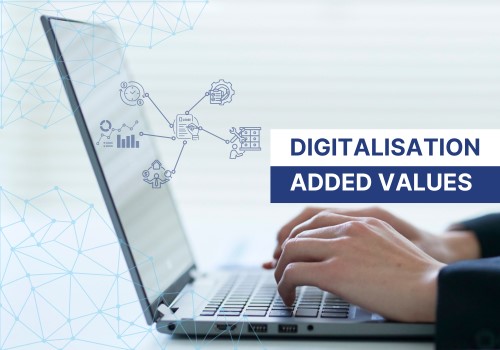3 Real Case Studies to Understand the Actual ROI from CMMS Implementation

People spend nearly 80–90% of their time in buildings, whether work, learn, shop or just to chat with friends while having a crafted coffee! Building managers constantly look for ways to improve buildings’ management performance and maintenance standards to upkeep operations and make their lives easier while improving the experience of their tenants, the public, and their team members too.
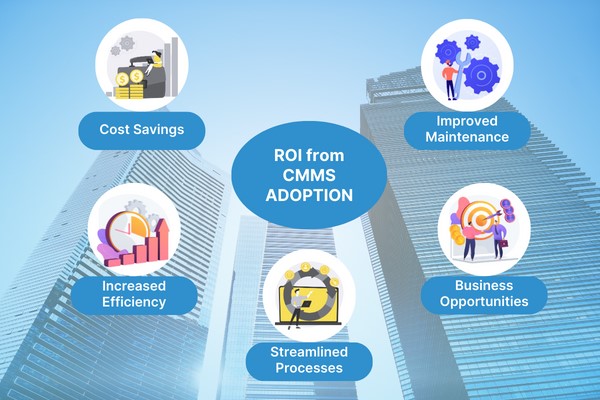
In the complex world of Property and Facility Management (PFM), the adoption of Computerized Maintenance Management Systems (CMMS) has become a strategic imperative and building owners and businesses in this sector are harnessing the power of CMMS not only to streamline operations but also to achieve a compelling Return on Investment (ROI).
In this article, we explore real case studies to illuminate the transformative impact of CMMS in the context of property and facility management while understanding the true meaning of CMMS ROI!
Defining CMMS’ ROI in Property and Facility Management
A realistic calculation of ROI in PFM extends beyond mere financial gains. The time where the question was: “I’m investing this much in a CMMS solution and I must justify to my directors this choice with at least a 15% return”, are over as the actual return is by far higher compared to the simple X%.
It encompasses improvements in asset performance, reduced downtime, and overall operational efficiency allowing either a smaller management and maintenance team or opening the door to business expansion without further increasing overheads!
Key Benefits of CMMS in Property and Facility Management
CMMS contribution has been proved invaluable in property and facility management, offering benefits such as:
-
Enhanced asset lifecycle management with substantial reduction of downtimes thanks to precise monitoring and timely maintenance,
-
Equipment lifespan extended beyond imagination thanks to predictive maintenance,
-
Substantial reduction in operational costs by enhancing maintenance cycles from reactive to predictive.
Let’s look into few real case studies, we have only changed the name of our clients, to better understand the hidden ROIs of CMMS adoption! Client 1, a prominent Kuala Lumpur based property development and management company, oversees a diverse portfolio of own commercial properties inclusive of office towers, shopping malls and retail spaces. They were facing multiple challenges before the adoption of a CMMS and approached us with the following issues.
Poor assets lifecycle and frequent downtimes
Client 1 was facing big challenges in maintaining and extending the lifecycle of critical assets such as HVAC systems, elevators, and security systems.
Before CMMS Adoption
Maintenance activities were primarily reactive, leading to increased downtime, costly emergency repairs, and very negative feed-backs from unhappy tenants and visitors.
Assets’ maintenance historic data were not properly kept making it very challenging to track the performance and maintenance history of each asset effectively. All asset management tasks were manual, causing delays in scheduling preventive maintenance and affecting overall efficiency in the whole managed property.
CMMS Implementation and Enhanced Asset Lifecycle Management
Client 1, after exploring several alternatives, decided to implement a robust CMMS to address these challenges and bring their asset management practices to a better level of efficiency.
Proactive Maintenance Scheduling
The adopted CMMS allowed Client 1 to shift from reactive to proactive maintenance. Automated scheduling of preventive maintenance tasks, such as routine inspections and component replacements, ensured that assets were serviced before issues escalated.
Real-time Asset Monitoring
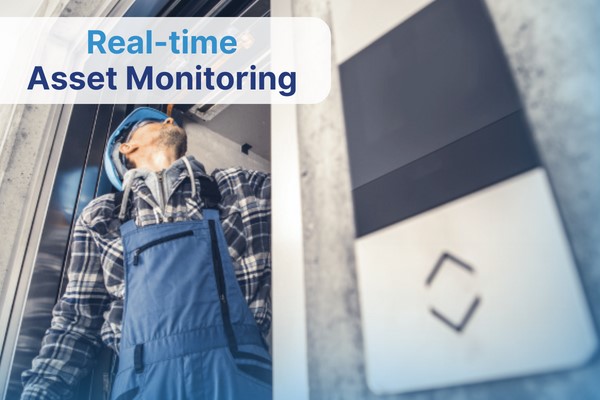
With CMMS, the maintenance team gained real-time visibility into the performance of key assets. Sensor data and automated alerts allowed them to monitor the health of all key equipment on a 24/7 basis.
Predictive Analytics for Component Replacement
Utilizing historical maintenance data, automatically stored by the system, and predictive analytics, the CMMS provided insights into the expected lifespan of all critical components. This enabled Client 1 to plan and budget for component replacements before they reached the end of their lifecycle, minimizing unexpected failures, incidents, and sudden issues.
Centralized Asset Repository
The CMMS served as a centralized repository for all asset-related information, including manuals, maintenance history, and warranty details. This streamlined communication and collaboration among maintenance teams, ensuring everyone had access to accurate and up-to-date information.
Tangible results from CMMS implementation
Downtime Reduction
By proactively addressing maintenance needs, Client 1 saw a significant reduction in downtimes across all their properties.
Extended Asset Lifespan
The implementation of CMMS allowed for more precise monitoring and timely maintenance, leading to an extended lifespan for critical assets.
Cost Savings
The shift from reactive to proactive maintenance resulted in substantial cost savings by reducing emergency repair expenses and avoiding costly asset replacements.
Realizing ROI Beyond Simple Calculation - Case Studies
Case Study 1
Cost Saving by Streamlining Property Maintenance
Client 2, another prime developer of commercial properties, was facing serious challenges in maintaining a diverse assets portfolio. Short after a CMMS adoption Client 2 managed to reduce of more than 20% their maintenance costs and experienced a 35% to 45% increase in overall operational efficiency.
How these positive results have been achieved, though? The following are some of the areas where the impact of an All-in-one fully integrated solution for CMMS has been most impactful:
Maintenance Costs
- Maintenance team’s time schedule managed more efficiently allowed to reduce the head count by one technician out of 10.
- Inventory management optimisation allowed to eliminate almost 30% of the inventory items and reduced the quantity per item of the remaining ones.
- Paperless processes allowed to reduce the cost for paper and printing by 90% and improving the ESG framework compliance.
Overall Efficiency
- Response time to emergencies or calls for technical intervention has been reduced by 60%
- Through the adoption of preventive maintenance, downtime of equipment such as lifts and escalators has been reduced by 70%
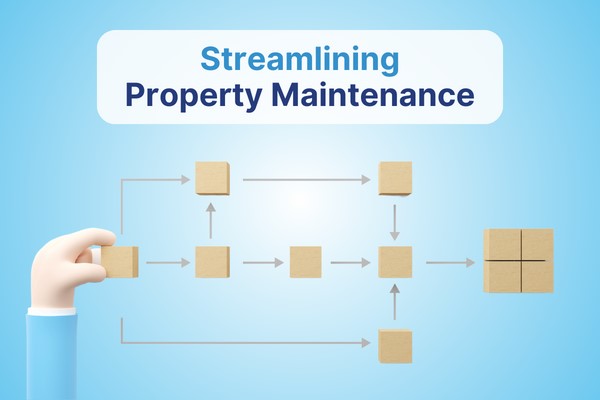
Not to mention the much-improved relationship with the tenants of their flagship property, a huge shopping mall right in the centre of Kuala Lumpur which allowed Client 2 to move up the rental and get full occupancy!
Case Study 2
Maximizing Facility Performance
For Client 3, an established facility management, maximizing the performance of their facilities was paramount. In just few months from the implementation of a CMMS, they experienced a substantial 25% increase in asset performance and a 15% saving in operational costs.
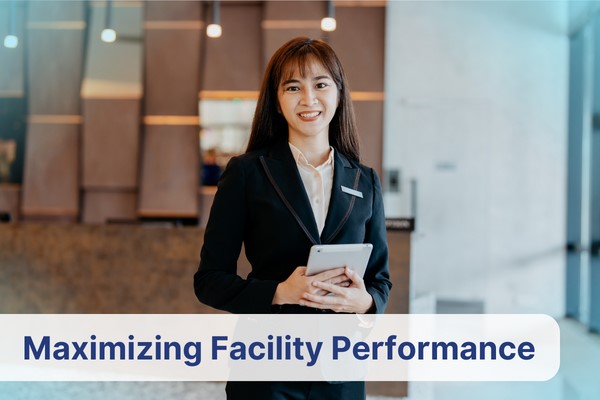
Case Study 3
Empowering Facility Teams
Client 4, a prominent property and facility management company with more than 150 managed buildings, was unable to increase participation sought to enhance their workforce productivity. CMMS not only automated manual processes but also optimized scheduling, leading to an impressive 35% to 45% increase in team productivity.
A highly functional CMMS solution helps team leaders and member to increase their effective productivity in the following ways:
- Time needed to prepare reporting is reduced by an impressive 70% as most summaries are generated by the system through a simple click.
- Weekly meetings are short, by a third of the time normally needed without a CMMS solution, and much more effective as everyone is already up-to-date via data and reports sharing ahead of the meeting.
- Communications happen on the platform involving everyone who needs to be kept in the loop.
This allowed Client 4 to acquire new clients, two new office towers to manage, without having the need of hiring anyone!

Looking to the Future: Emerging Trends in CMMS for Property and Facility Management
As technology advances, CMMS continues to evolve. Property and facility management professionals should keep an eye on trends such as AI integration, IoT in facility monitoring, and mobile accessibility. Best would be to reach out to us and request for a demo of the latest upgrades on our CMMS!
In conclusion, the presented case studies should help having a better understanding of where and underscore the profound impact of CMMS on property and facility management. The path to ROI through CMMS involves optimized property maintenance, enhanced facility performance, empowered facility teams, bring tenants and visitor experience to a totally new level.
Ready to unlock the potential of CMMS for your property and facility management endeavours? Explore how ServeDeck CMMS can revolutionize your management and maintenance practices and contribute to a significant ROI, ask for a free demo to our team!
ServeDeck, knowing how important data sharing and reporting is, is working closely with a research firm on a CMMS Implementation and related ROI report that will be published in January next year. The report aims to become a CMMS implementation roadmap with multiple case studies explaining the details of all hidden ROI. Stay in touch or drop us an email to make sure you will receive it once published!
ABOUT THE AUTHOR
.jpeg)
The opinions expressed in this article are solely of the author, Dr Daniele Gambero.
Dr Gambero has been an expatriate to Malaysia from Italy, since 1998 and has more than 35 years of real estate experience. He is the co-founder and group CEO of REI Group of Companies, the Co-founder of Propenomy.com and the president of the Malaysia Proptech Association.
In the past 10 years Daniele, as international and TEDX speaker, has engaged several hundreds thousand people talking about Property, Economy, Propenomy, Digital Marketing and Motivation. He is also a bestselling author and columnist on several magazines and main stream media. You can reach him directly through his LinkedIn page here.
SHARE THIS POST:
Comments (0)
Leave a Reply
Your email address will not be published. Required fields are marked *



